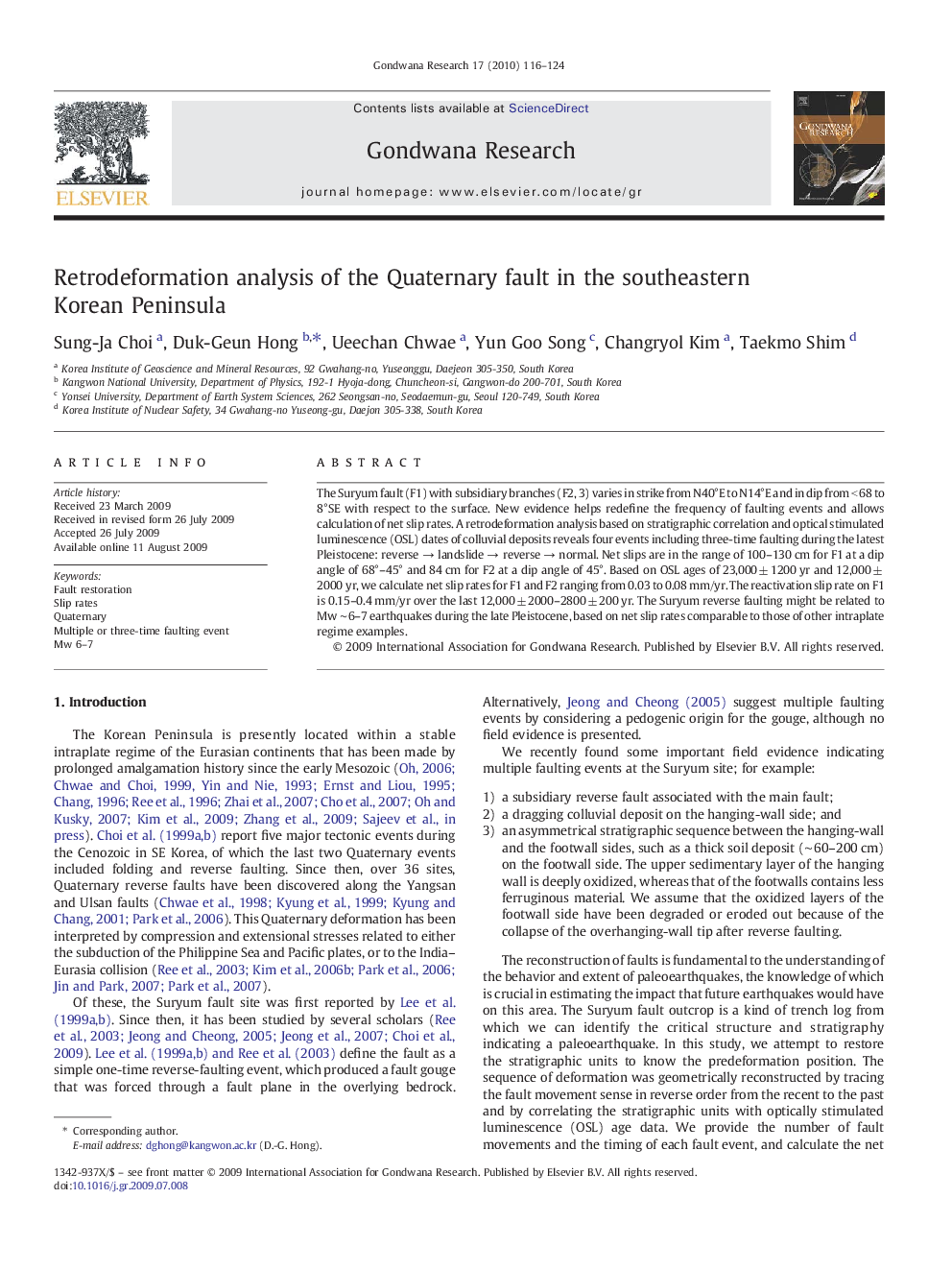| کد مقاله | کد نشریه | سال انتشار | مقاله انگلیسی | نسخه تمام متن |
|---|---|---|---|---|
| 4727265 | 1356367 | 2010 | 9 صفحه PDF | دانلود رایگان |

The Suryum fault (F1) with subsidiary branches (F2, 3) varies in strike from N40°E to N14°E and in dip from < 68 to 8°SE with respect to the surface. New evidence helps redefine the frequency of faulting events and allows calculation of net slip rates. A retrodeformation analysis based on stratigraphic correlation and optical stimulated luminescence (OSL) dates of colluvial deposits reveals four events including three-time faulting during the latest Pleistocene: reverse → landslide → reverse → normal. Net slips are in the range of 100–130 cm for F1 at a dip angle of 68°–45° and 84 cm for F2 at a dip angle of 45°. Based on OSL ages of 23,000 ± 1200 yr and 12,000 ± 2000 yr, we calculate net slip rates for F1 and F2 ranging from 0.03 to 0.08 mm/yr. The reactivation slip rate on F1 is 0.15–0.4 mm/yr over the last 12,000 ± 2000–2800 ± 200 yr. The Suryum reverse faulting might be related to Mw ∼ 6–7 earthquakes during the late Pleistocene, based on net slip rates comparable to those of other intraplate regime examples.
Journal: Gondwana Research - Volume 17, Issue 1, January 2010, Pages 116–124